Download This Guide As A PDF
Selecting the Best Commercial Bike Rack
There are a lot of commercial bike racks to choose from. But not all bike racks are created equal. There are key features that make certain types of commercial bike racks better options for securing and properly supporting bicycles than others.
In this guide you'll learn what those key features are, other considerations for bike racks, as well as examples of good bike racks, and bike racks to avoid.
After reading you'll be able to quickly and easily evaluate commercial bike racks and select the best one to meet your bike parking needs.
What Makes a Good Bike Rack?
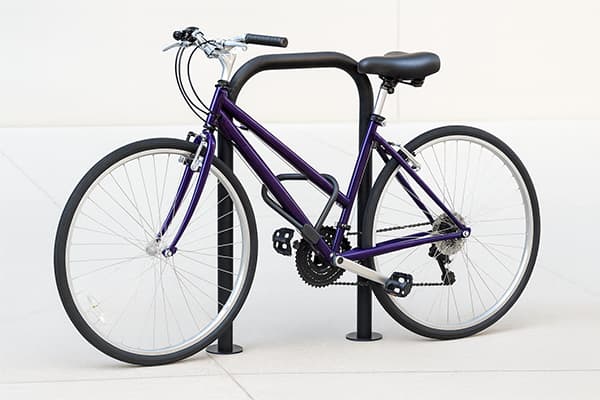
Supports the Bicycle in Two Places
It's important that a bike rack support the frame at least two different spots horizontally. This helps keep the bicycle from falling over.
Some racks create two points of contact but are directly above each other. Other racks only allow for one point of contact.
This makes it more common for the front wheel to turn and cause the bicycle to fall. This can damage the bicycle and create a hazard when the bicycle is lying on the ground.
The rack should also be able to support bicycles without a diamond-shaped frame or a horizontal top tube. Some women’s specific design or step-through frames would be examples.
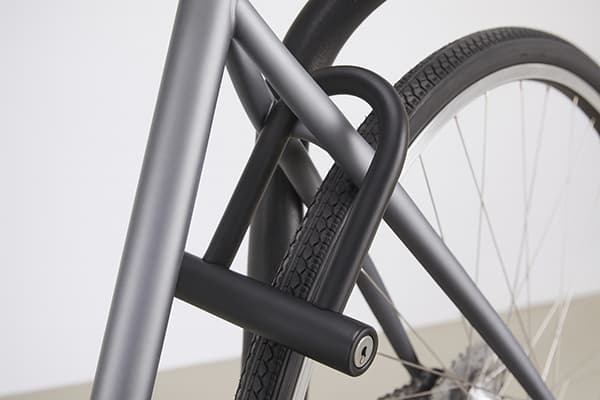
Can Lock the Frame and Wheel to the Bike Rack
It is quick and very easy to remove the wheels of most bicycles. This is why both the frame and at least one wheel need to be secured to a bike rack. If only the wheel can be locked up, many thieves will remove the frame from the wheel and take the rest of the bike.
Bike racks should also allow for front-in and/or back-in parking:
FRONT-IN PARKING
A U-lock can lock the front wheel and down tube to the rack
BACK-IN PARKING
A U-lock can lock the rear wheel and seat tube to the rack
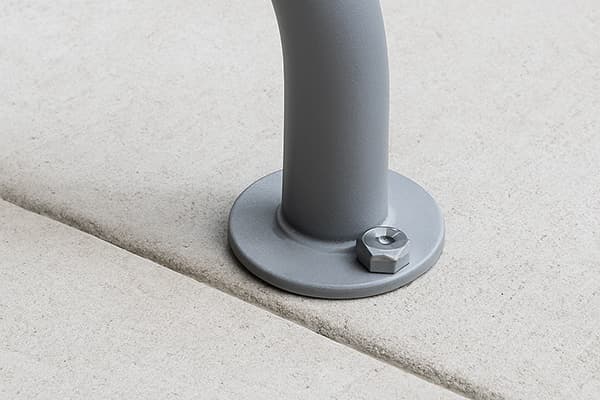
Securely Mounts to the Ground
How a bike rack is mounted to the ground is critical. If a bike rack can be dislodged from the surface it becomes useless.
In-Ground Mount
With this installation method, the bike rack is set in place and concrete is poured. Encasing the legs of the rack in concrete.
Surface Mount
Surface mount bike racks have flange plates with mounting holes. Anchors are inserted in the holes and adhere the rack to an existing concrete pad.
❌ This is not a viable option for installing a bike rack on asphalt or pavers.
Rail Mount
Rail mount bike racks have racks bolted to rails. These can then be anchored to the surface or left freestanding.
Freestanding Racks
These would be best used where there is additional security. Like fenced-in or actively monitored areas.
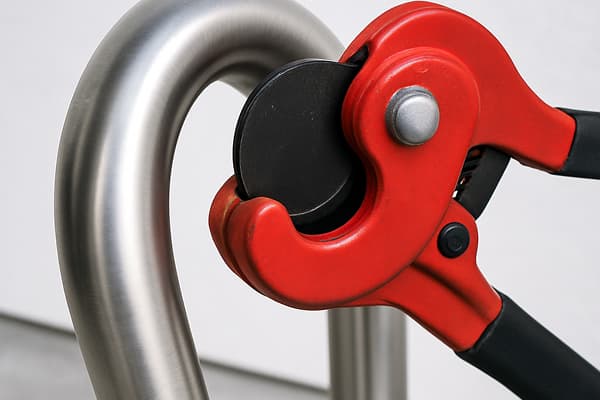
Resists Cutting, Bending or Deformation
The bike rack itself can be attacked by thieves to access locked bikes. A good bike rack should resist cutting, bending or deformation by common hand tools such as bolt or pipe cutters, wrenches and pry bars.
To make the rack the most secure, diameter and shape of the tube are the primary factors to consider.
- The greater the diameter of tube, the harder it will be to bend or cut. A tube diameter of 2 3/8” is recommended. Minimally, the tube should be 1 7/8” in diameter.
- A square tube shape will more easily defeat common cutting tools carried by thieves as compared to round tubing.
Additional Considerations of Bike Racks
Aesthetics
When it comes down to it, a bike rack that properly supports and secures a bike is a beautiful piece art to users of bike racks. But there are options to enhance the aesthetics of a bike rack.

Galvanized Steel

Stainless Steel
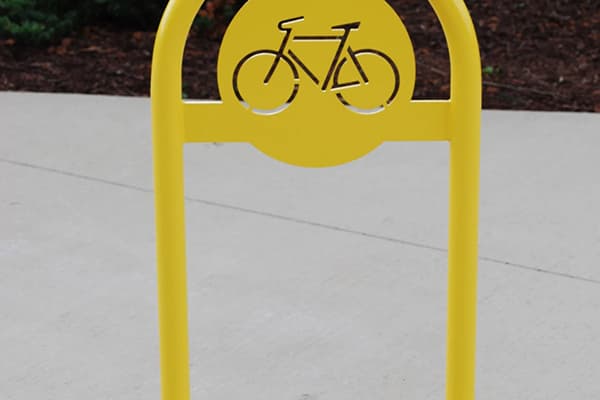
Powder Coated
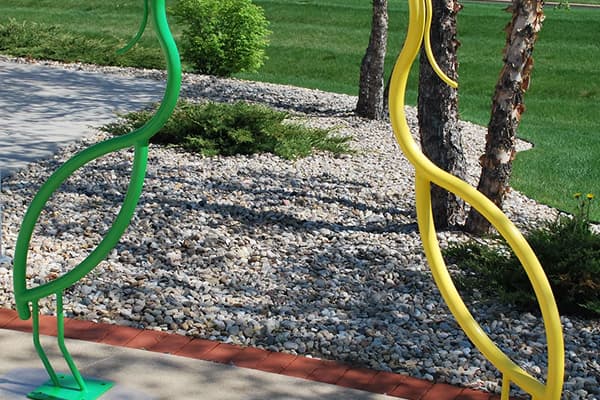
Custom Bike Racks
Accessibility and Usability
When the elements of a bike rack don’t meet the primary criteria, riders will typically secure their bike in unintended ways to achieve optimal security and stability. This can significantly reduce the number of bikes that can be parked as space on the rack and access to lockable elements is blocked.
Additionally, if racks are not spaced properly, bikes are forced to be parked too close together. This causes conflicts where handlebars overlap. This can result in damage to bikes or injury to users as bikes are loaded into and removed from the rack.

Not enough spacing between bike parking spots reduces the racks usability
Recognizable and Intuitive
If it's not apparent the bike rack is for parking bikes, it will go unused. It should also be intuitive for the rider to know how to properly secure their frame and wheel to the rack.
Additional Stability
While bike racks that offer two points of contact do a good job of keeping the bicycle upright, wheels can still turn. Bike racks that provide a well to hold the wheel AND two points of contact provide much greater stability for the bicycle. With bike racks that have a wheel well, the two points of contact is a must. When “bike racks” have only a wheel well, it becomes very easy for the wheel to be bent.

A wheel well provides additional stability for parked bicycles
Good Bike Racks
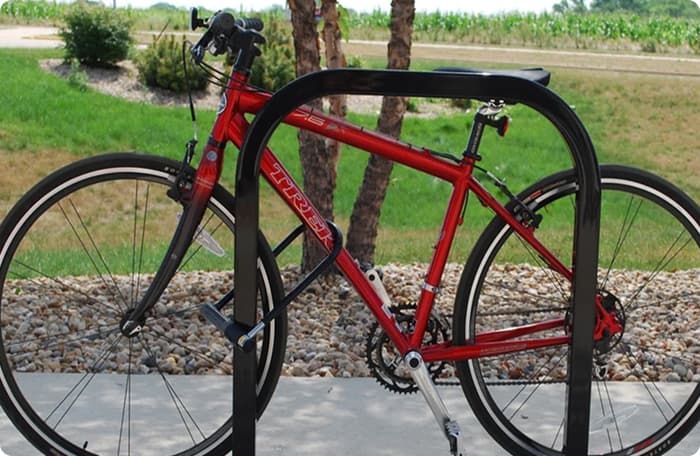
Inverted U Bike Racks
Also known as: Staples, U racks, Single Wave
Aesthetics
Simple design that comes in many finishes. Offered in different shapes and has color, lean bar and shape customization options.
Usability and accessibility
A secure bike rack that is accessible from either side to easily lock bicycle to rack.
Recognizable and intuitive
Common style of ground bike rack makes it easily identifiable and properly used.
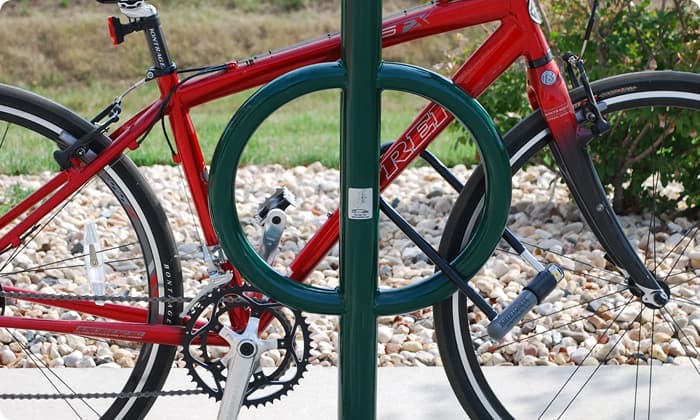
Post and Ring
Also known as: bike post, ring, bollard
Aesthetics
Available in different designs and finishes. Custom color, rings and shape options.
Usability and accessibility
Rack is accessible from either side and bikes can be easily secured.
Recognizable and intuitive
Another style of ground bike rack that makes it easily identifiable and properly used.
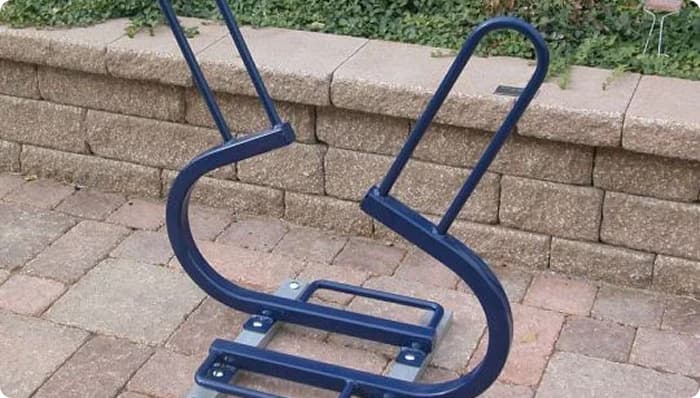
Wheel-Well Secured
Aesthetics
Unique shape, available in different designs and finishes. Custom color options.
Usability and accessibility
Individual rack accessible from only one side. Racks can be placed to accommodate access from either side. Bikes can easily be secured.
Recognizable and intuitive
Reasonably intuitive. Wheel well helps properly park bicycle.
Bike Racks to Avoid
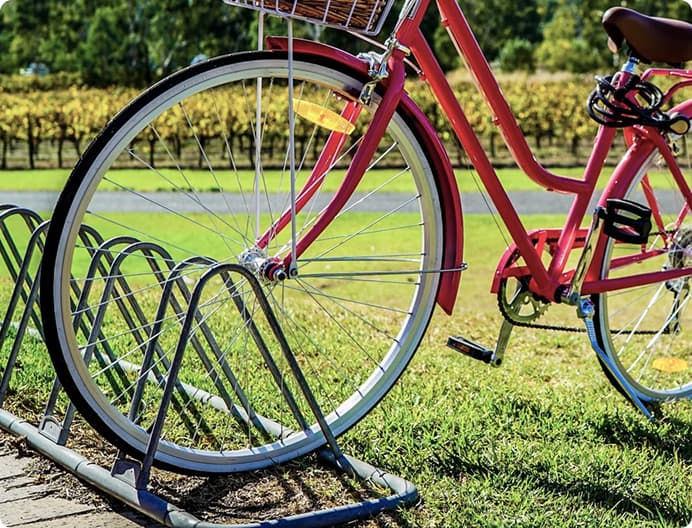
Wheel well only
The main problem with these racks is that only the wheel can be secured. Leaving bikes susceptible to theft.
The other main concern is the damage they can cause. Bikes in these racks are easily pushed over - inadvertently or not. This leads to bent wheels.
Also, the openings are often not wide enough to receive wheels with larger widths, like mountain bikes, and can bend spokes.
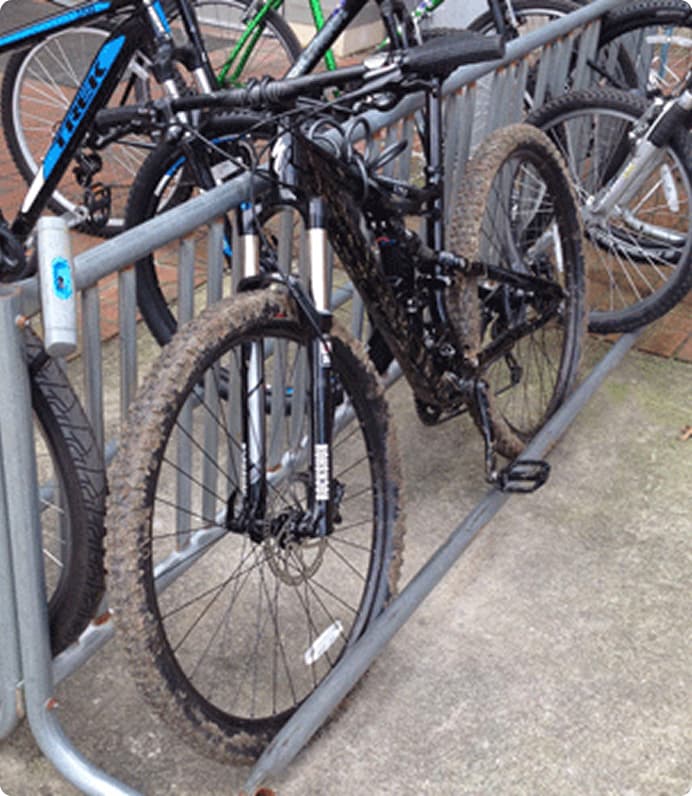
Grid Bike Rack
Like wheel well only, grid-style bike racks share the same problems. When used as designed, it is not possible to secure the frame and wheel to the rack.
Bicycles are supported only by the bars of the rack at the wheel. Making it likely that bikes fall over and increasing the possibility of damage to the bike. There’s a reason these racks are often referred to as a wheel bender.
The lack of desirable features from grid bike racks typically leads to an additional problem - unintended parking. To better support and secure bicycles at these racks, bikes are often parked in unintended ways.
The result is fewer bikes can be parked at the rack than what is advertised.
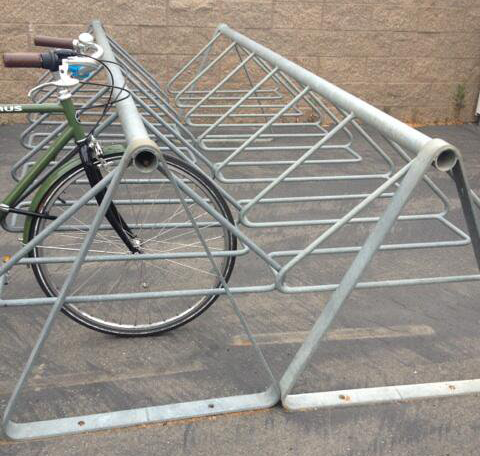
Coat Hangers
Problems with coat hanger bike racks depend on the overall design. Many meet a couple, but not all the criteria to most effectively secure and support bikes.
Here are common design issues of coat hanger bike racks:
- Top, cross bar not tall enough for taller bikes to be pulled in far enough to lock frame/wheel to loop
- Locking loops may be susceptible to bending or cutting
- Close spacing of loops reduces usability and total parking capacity
- Accessible from only one side
No social feed items found
